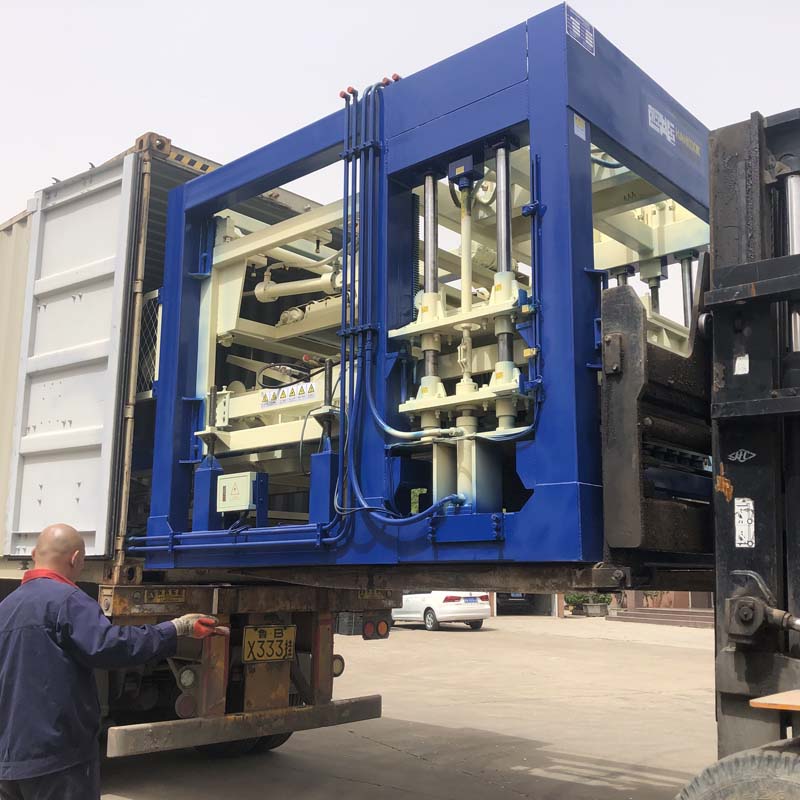
Image source :Aiweiblockmachine
Bridging the Gap: Integration of Digital Tools in Semi-Automatic Block Production
In the era of Industry 4.0, the construction industry is undergoing a profound transformation, driven by digitalization and automation. One critical aspect of this transformation is the integration of digital tools into semi-automatic block production processes. These tools encompass a wide range of technologies, from IoT (Internet of Things) devices to data analytics and machine learning. This comprehensive exploration delves into the integration of digital tools in semi-automatic block production, shedding light on the benefits, challenges, and the future of this innovative approach.
Section 1: The Digitalization of Construction
1.1 Industry 4.0 in Construction
Industry 4.0, often referred to as the Fourth Industrial Revolution, represents the convergence of digital technologies, data analytics, and automation in various industries, including construction. It promises increased efficiency, reduced costs, and improved quality in construction processes.
1.2 The Role of Digital Tools
Digital tools encompass a wide array of technologies, such as sensors, data analytics, cloud computing, and artificial intelligence, all of which have the potential to transform traditional construction practices, including block production.
Section 2: The Digital Transformation of Semi-Automatic Block Production
2.1 IoT Sensors and Connectivity
IoT sensors play a crucial role in capturing real-time data from semi-automatic block production machines. These sensors monitor parameters such as machine temperature, vibration, energy consumption, and production rates.
2.2 Data Collection and Analytics
The data collected from IoT sensors are transmitted to centralized systems where they are analyzed in real-time. Advanced analytics tools identify patterns, anomalies, and opportunities for optimization.
2.3 Machine Learning and Predictive Maintenance
Machine learning algorithms can predict equipment failures and maintenance needs, enabling proactive maintenance to reduce downtime and enhance production efficiency.
2.4 Quality Control and Inspection
Digital tools facilitate automated quality control processes, including the use of cameras and sensors to inspect blocks for dimensional accuracy, surface finish, and defects.
Section 3: Benefits of Digital Tool Integration
3.1 Enhanced Efficiency
The real-time monitoring and data analytics enabled by digital tools provide insights into production processes, allowing for continuous optimization and increased efficiency.
3.2 Improved Quality
Automated quality control processes ensure that blocks meet or exceed industry standards, reducing defects and waste.
3.3 Predictive Maintenance
Predictive maintenance minimizes unplanned downtime, reducing operational disruptions and enhancing machine lifespan.
3.4 Energy Efficiency
Digital tools can monitor and optimize energy consumption, contributing to reduced operational costs and environmental sustainability.
3.5 Customization and Flexibility
Digital tool integration allows for the customization of block designs and sizes, catering to the demands of architects and builders.
3.6 Data-Driven Decision Making
Data analytics support informed decision-making, enabling operators to make adjustments in real-time to improve production outcomes.
Section 4: Challenges and Considerations
4.1 Initial Investment
The integration of digital tools requires an initial investment in hardware, software, and training, which can be a barrier for some businesses.
4.2 Data Security
The collection and storage of sensitive production data raise concerns about data security and privacy.
4.3 Workforce Training
Operators and maintenance teams need training to effectively use digital tools and interpret data, which may require additional resources.
4.4 Scalability
Ensuring that digital tools can scale to accommodate increasing production demands is a critical consideration for long-term success.
Section 5: Case Studies
5.1 Case Study 1: Real-Time Monitoring
In this case study, a block production facility integrates IoT sensors and real-time monitoring to optimize machine performance and reduce energy consumption. The analysis examines the impact on efficiency and cost savings.
5.2 Case Study 2: Predictive Maintenance
A construction company adopts predictive maintenance using machine learning algorithms to reduce machine downtime and maintenance costs. The case study evaluates the financial benefits and machine reliability improvements.
5.3 Case Study 3: Quality Control Automation
A block manufacturer automates quality control processes through the use of digital tools, enhancing block quality and reducing defects. The case study assesses the impact on production efficiency and customer satisfaction.
Section 6: The Future of Digital Tool Integration
6.1 Continued Advancements
The ongoing development of digital tools, including AI-driven analytics and robotics, will continue to reshape semi-automatic block production.
6.2 Sustainability Focus
Digital tools will increasingly support sustainability initiatives by optimizing energy consumption, reducing waste, and supporting the use of eco-friendly materials.
6.3 Accessibility
As digital tools become more accessible and affordable, even small-scale block producers can leverage these technologies to remain competitive.
Section 7: Conclusion
The integration of digital tools into semi-automatic block production represents a significant step forward in the construction industry’s digital transformation. These tools offer a multitude of benefits, including enhanced efficiency, improved quality, and data-driven decision-making. While challenges exist, the potential for cost savings and long-term sustainability makes the investment in digital tool integration a compelling choice for block manufacturers. As the technology continues to evolve, it promises to revolutionize semi-automatic block production, ensuring that this essential component of construction remains at the forefront of innovation and efficiency. The future of block production is undoubtedly digital, and those who embrace this transformation are poised to thrive in the evolving landscape of the construction industry.
